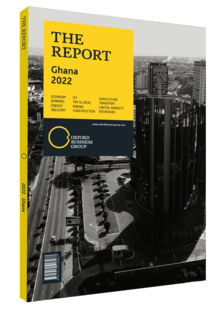How Ghana seeks to bolster local manufacturing capacity
The African Continental Free Trade Area (AfCFTA) was established in 2018 after an agreement between 44 member states of the African Union (AU) and was officially launched in January 2021. The pact aims to significantly reduce or eliminate tariff and non-tariff barriers on the continent, facilitate a single continental market for goods and services, and enable the free movement of people and investment. Ghana’s capital, Accra, hosts the Secretariat of the AfCFTA, which was formally handed over to the AU in August 2020. Ghana aims to use its strategic position to establish itself as a gateway and trading centre in West Africa, as part of wider plans to revitalise and transform its economy.
New Markets
The chief aim of the AfCFTA is to increase intra-African trade, which is relatively low compared to intra-continental trade elsewhere. In 2020 intra-African exports accounted for 16% of total exports from countries on the continent, down from a peak of 21% in 2015 due to supply chain issues related to the pandemic. The value of intra-continental trade was $61bn in 2020, with mineral products, chemicals, food and beverages, base metals and machinery being the top goods traded. This highlights the opportunity for local manufacturers to tap a large and growing market. According to South Africa-based think tank Trade Law Centre, Ghana is expected to scale up manufacturing, and bolster the export of processed and light manufactured products following the launch of the AfCFTA.
Similarly to other countries in Africa, the majority of Ghana’s exports are destined for markets outside the continent. In 2019 the country exported $16.8bn worth of goods and services, $2.9bn of which was sent to sub-Saharan markets. By comparison, $2.8bn in exports was sent to China – Ghana’s largest export market – alone. That year sub-Saharan markets accounted for 17.4% of Ghana’s exports, compared to 33.3% for Europe and Central Asia, and 23.2% for East Asia and the Pacific.
Ghana’s largest trading partner within the continent is South Africa, which accounted for 11.8% of total exports and 67% of intra-African exports in 2019. The West African country’s main exports to its continental peers include semi-manufactured gold, crude petroleum oil, footwear, palm oil and plastic packaging.
Facilitation
The AfCFTA aims to stimulate intra-African trade by removing tariffs on 90% of goods, providing Ghana with an opportunity to expand its export markets. The implementation of tariff reduction measures by African states reduces the relative cost of imported goods, enabling Ghanaian manufacturers to expand sales into these markets with a more competitive offering. The tariff reductions and market access provisions introduced by the AfCFTA are reciprocal, and the removal of tariffs is projected to increase intra-African trade by between 15% and 25% by 2040 as the relative costs of intra-African traded goods decrease.
Tariff reductions are expected to favour small and medium-sized businesses that were previously unable to engage in continental trade. As a result, smaller manufacturers supported by the One District, One Factory programme may find new markets available. However, as intra-African competition is likely to rise, the extent to which Ghana will benefit from opportunities for exporting manufactured goods will depend on the level of industrialisation and productivity.
To fully leverage the AfCFTA it will be important to prioritise value added to improve terms of trade and increase export earnings. This could be supported by linking into regional value chains, and improving productivity and capacity. As Ghana bolsters its capacity to manufacture more medium- and high-tech goods, a shift in trade patterns away from commodities could support diversification and structural transformation. “Trade agreements like the AfCFTA have potential, but they must be properly implemented to ensure that businesses benefit from the full impact,” Richard Adjei, managing director of beverage producer Kasapreko, told OBG. “There is also a need to invest in infrastructure so that cross-border trade is cost competitive.”
You have reached the limit of premium articles you can view for free.
Choose from the options below to purchase print or digital editions of our Reports. You can also purchase a website subscription giving you unlimited access to all of our Reports online for 12 months.
If you have already purchased this Report or have a website subscription, please login to continue.

